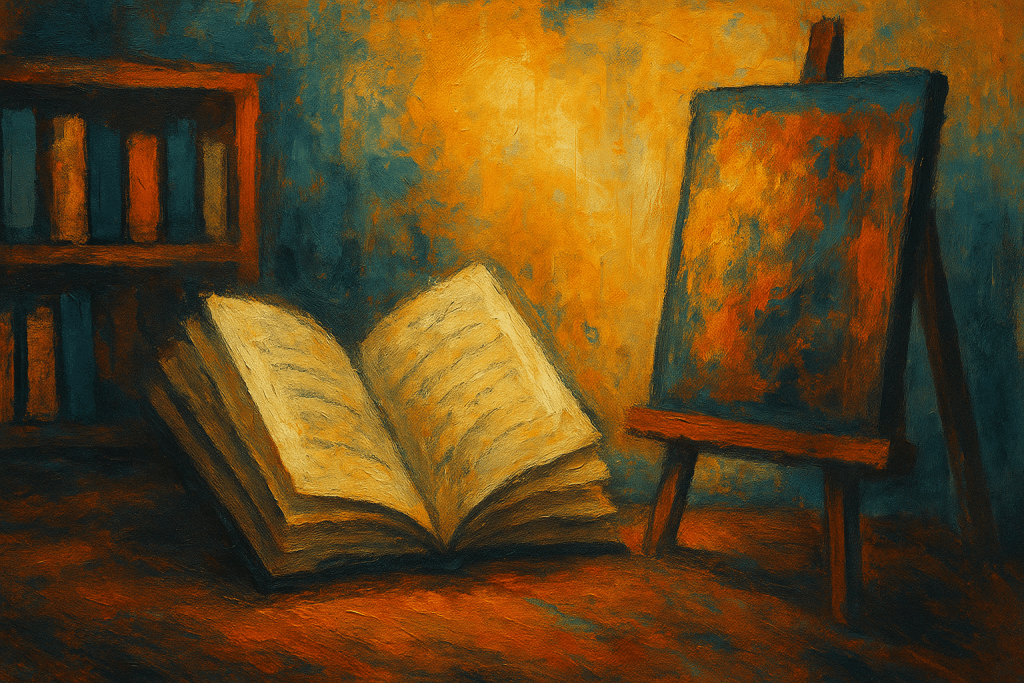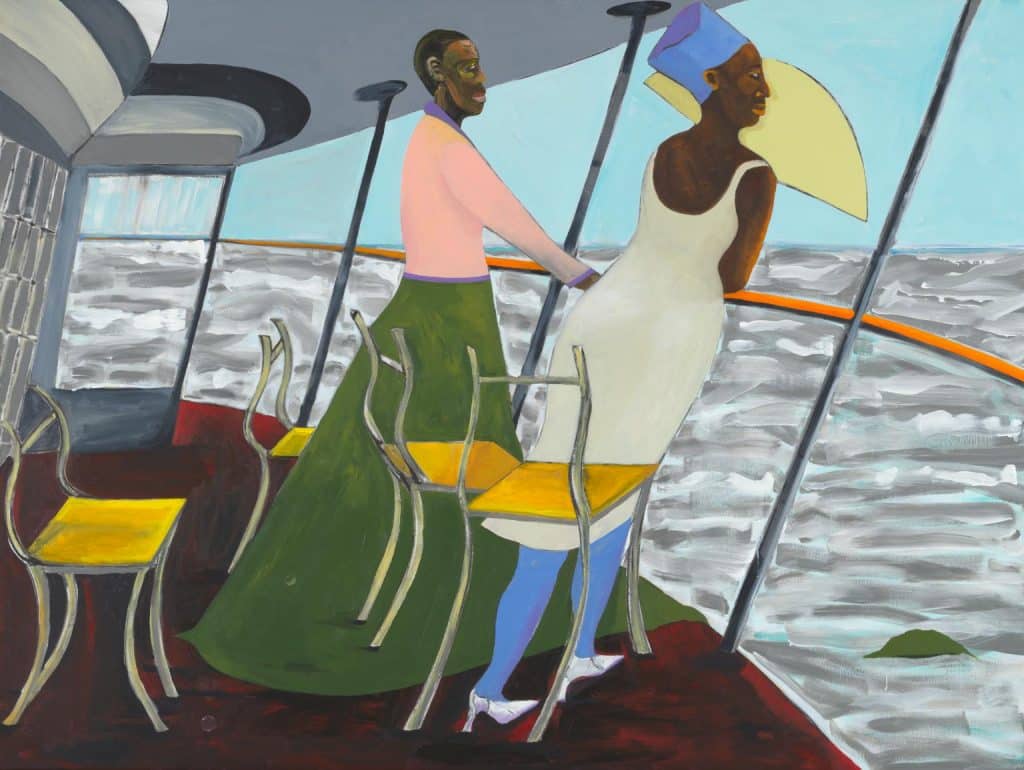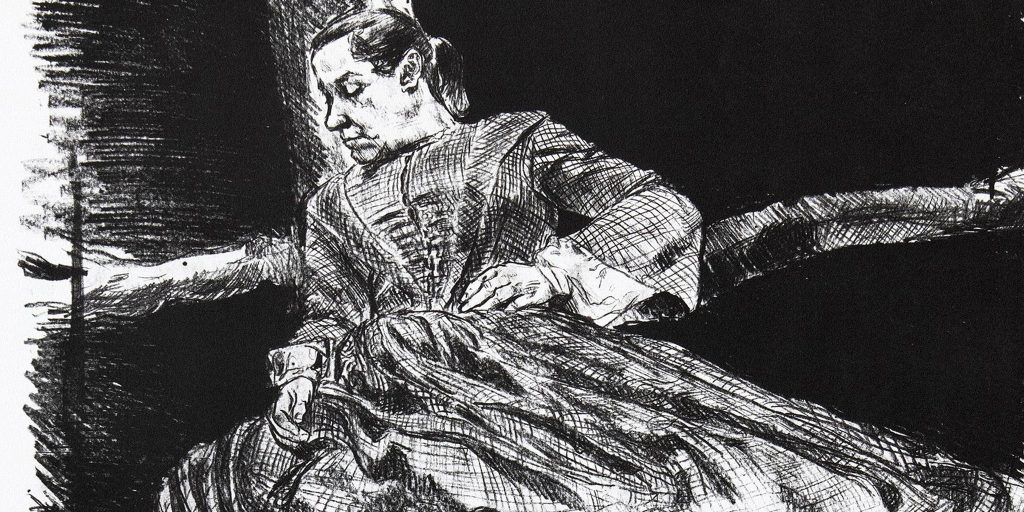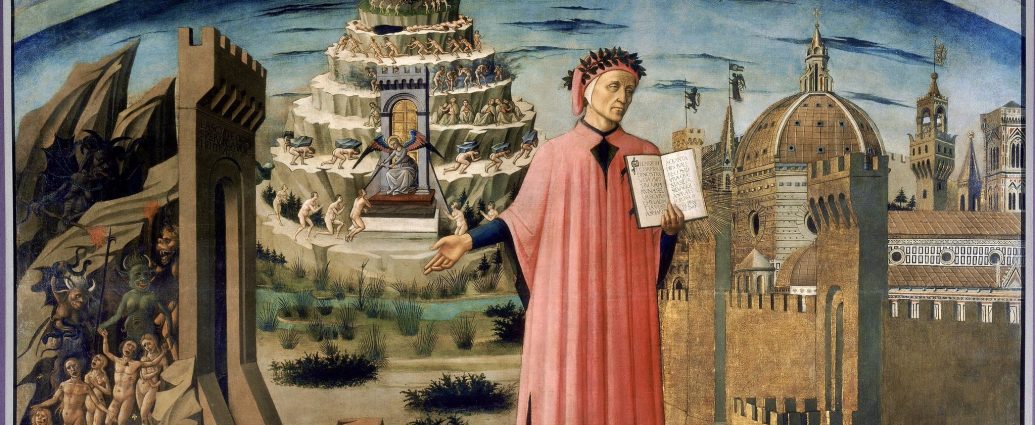The Power of a Well-Told Image
Can a painting whisper secrets the way a novel does? Can an artwork stage drama without a single line of dialogue?
In the world of contemporary art, the boundary between image and word has become increasingly porous. Artists are drawing inspiration from books, plays, poetry, and personal narratives not merely as references, but as raw material. Across Britain and beyond, literature continues to animate the work of visual artists—whether through direct homage, atmospheric influence, or narrative structure. Today, art is not only something to be seen, but something to be read, interpreted, and experienced through the prism of story.
This article explores the enduring and evolving connection between literature and visual art, from historical echoes to contemporary practice. We will examine how artists interpret novels, poems, and theatrical works into physical forms and immersive installations—and why this fusion matters more than ever.
A Brief History of Literary Influence on Art
The relationship between literature and art is hardly a modern invention. In Britain, it stretches back centuries.
The Romantic poet and painter William Blake fused his illuminated verses with mystical imagery, uniting text and image in handmade books that challenged Enlightenment rationalism. Later, the Pre-Raphaelites, particularly Dante Gabriel Rossetti and Edward Burne-Jones, obsessively mined Shakespeare, Tennyson, and classical myth for subject matter, creating lush, emotionally-charged canvases that read like visual poetry.
In the modernist era, artists like David Bomberg and Vanessa Bell engaged with literary experimentation through the Bloomsbury Group. Works were not merely decorative—they aimed to express something abstract, psychological, or interior, akin to the stream-of-consciousness writing of Virginia Woolf or James Joyce.
Throughout the 20th century, artists continued to draw from the written word. But something shifted: rather than illustrate, many began to respond, remix, or reconstruct. The relationship became dialogic rather than descriptive.

The Storytelling Instinct in Contemporary Art
Today’s artists often reject straightforward illustration in favour of more nuanced narrative strategies. Some deploy visual storytelling; others work conceptually, allowing fragments of language or metaphor to shape the experience.
Contemporary storytelling in art might look like:
- Sequential visuals: evoking cinematic pacing or graphic novel structure.
- Text-based work: incorporating excerpts from novels or poems.
- Symbolic atmospheres: where mood and reference hint at deeper literary roots.
In Britain, this storytelling instinct often intersects with themes of identity, memory, class, and postcolonial critique. It echoes the rise of autofiction in contemporary literature, as well as a return to myth, folklore, and psychological drama in poetry.
In this space, words are not just tools but companions. Narrative in art doesn’t have to “tell a story” in the traditional sense—it can suggest one, resist one, or invent new ways of storytelling altogether.
Artists Inspired by Literary Works
British contemporary art offers a wealth of examples where literature and visual language meet. Below are just a few of the many artists whose practices are entwined with the written word.

Lubaina Himid
A Turner Prize winner and pioneer of the British Black Arts Movement, Himid frequently engages with literature—from Shakespeare’s Othello to African diasporic poetry. Her installations often use theatricality, dialogue, and metaphor to reframe historical narratives and give voice to marginalised perspectives.
Tom Phillips
Best known for A Humument, Phillips transformed an obscure Victorian novel (A Human Document) into a visual-poetic masterpiece. Each page is altered with collage, illustration, and newly composed poetry—making it one of the earliest and most celebrated examples of “artist books.”
Grayson Perry
Perry constructs layered narratives around fictional characters (like his female alter ego “Claire”), autobiographical fragments, and social commentary. His tapestries and pots read like novels—dense with symbolism, satire, and emotional tension.
Fiona Banner aka The Vanity Press
Banner’s practice is rooted in language. She once transcribed the entire film Top Gun into text, presenting it as a visual object. She explores how narratives—especially cinematic and literary ones—shape perception and identity.
Cornelia Parker
Parker’s works often take inspiration from classic literature, including Hamlet and Great Expectations. Her suspended installations and fragmented materials evoke literary motifs: death, transformation, redemption. In The Maybe (with Tilda Swinton), the very act of storytelling becomes performative.
From Page to Paint
Tracey Emin and the Poetic Confession
Tracey Emin’s work is frequently compared to the confessional poetry of Sylvia Plath or Anne Sexton. Her installation My Bed (1998) shocked audiences with its raw intimacy, but beneath the tabloid scandal was something more literary: a diaristic, symbolic self-portrait echoing the rhythms of poetic breakdown and reformation.
Emin’s neons, monoprints, and autobiographical sketches carry an emotional intensity often linked to the poetic tradition. Her visual language mirrors literary confessions—fragmented, visceral, vulnerable.
“My work is about memory, emotion, and narrative,” Emin has said. “It’s like a visual novel.”
Paula Rego and the Rewriting of Jane Eyre

Paula Rego, the Portuguese-British painter, returned often to literary heroines—none more compelling than Charlotte Brontë’s Jane Eyre. In her Jane Eyre series (1997), Rego reimagines the story with a radical feminist lens.
Rego’s work does not illustrate the novel; it interrogates it. Her Jane is neither meek nor passive, and the power dynamics are rendered raw, visceral, and confrontational. The series underscores how visual art can rewrite literature—offering new layers of critique and revelation.
Chris Ofili and the Divine Comedy
In his 2017 exhibition Paradise Lost, Chris Ofili presented a triptych of paintings inspired by Dante’s Divine Comedy, created during his time in Trinidad. The works recontextualise themes of redemption, spirituality, and journey through Caribbean myth and colonial history.
Rather than simply echoing Dante’s narrative, Ofili filters it through black identity, postcolonial symbolism, and abstract colour fields. The result is both contemporary and timeless—a reinterpretation of literary canon through a diasporic lens.
When Theatre Crosses the Canvas
Literature doesn’t end at books. The performing arts—especially theatre—have long informed visual art in Britain.
Gillian Wearing
Wearing’s Confess All on Video series, and her masked self-portraits, echo theatrical monologue and performance. Participants act out scripts or confront identity in a staged, almost Brechtian manner.
Michael Landy
Known for his work Break Down—where he destroyed all his possessions—Landy brings an element of live performance and drama into the gallery. It’s performance as protest, theatre as conceptual critique.
Theatre-visual hybrids
Artists such as Sonia Boyce, Bobby Baker, and Cathy Wilkes blend performative and sculptural language. At times their work resembles a set, a scene, a tableau—asking the viewer to consider the “script” that lies beneath the image.
Why These Connections Matter Today
In a moment when storytelling has splintered into tweets, soundbites, and TikToks, there is something radical about the slowness of literature—and the lingering echo it brings to art.
Literature provides:
- Temporal depth: A work can stretch across eras.
- Symbolic weight: Literary allusion adds density to interpretation.
- Political context: Stories reflect power, resistance, and identity.
The resurgence of narrative art reflects our desire for coherence in a fragmented world. For artists working with race, gender, trauma, or heritage, the literary model offers a way to re-centre the self and reframe history.
Moreover, interdisciplinary art breaks down silos. It invites the viewer to bring their own cultural references—be it poetry, theatre, or prose—to bear on visual experience.
Final Thoughts: Read Between the Brushstrokes
Literature and art are both acts of translation: of emotion into form, of experience into language, of silence into something that speaks. When they meet, they create a third space—a place of reflection, resonance, and reimagination.
As a collector, viewer, or creator, seeking out these literary echoes can deepen your relationship with art. Look not just at what a painting shows, but what it says. Does it whisper like a poem? Does it echo a monologue? Does it invite you into a story you already know—or one you’ve never heard before?
“The best art,” Virginia Woolf once wrote, “makes us feel that we are not alone.” Literature does the same. And together, they remind us that every picture is also a page—and every page a portal to something more.
Further Exploration
- Visit: Tate Britain’s exhibitions on literary influence; the British Library’s Writing: Making Your Mark archive
- Read: A Humument by Tom Phillips; On Art and Artists by Virginia Woolf
- Follow: Artists who also write—Edmund de Waal, Olivia Laing, Heather Phillipson

